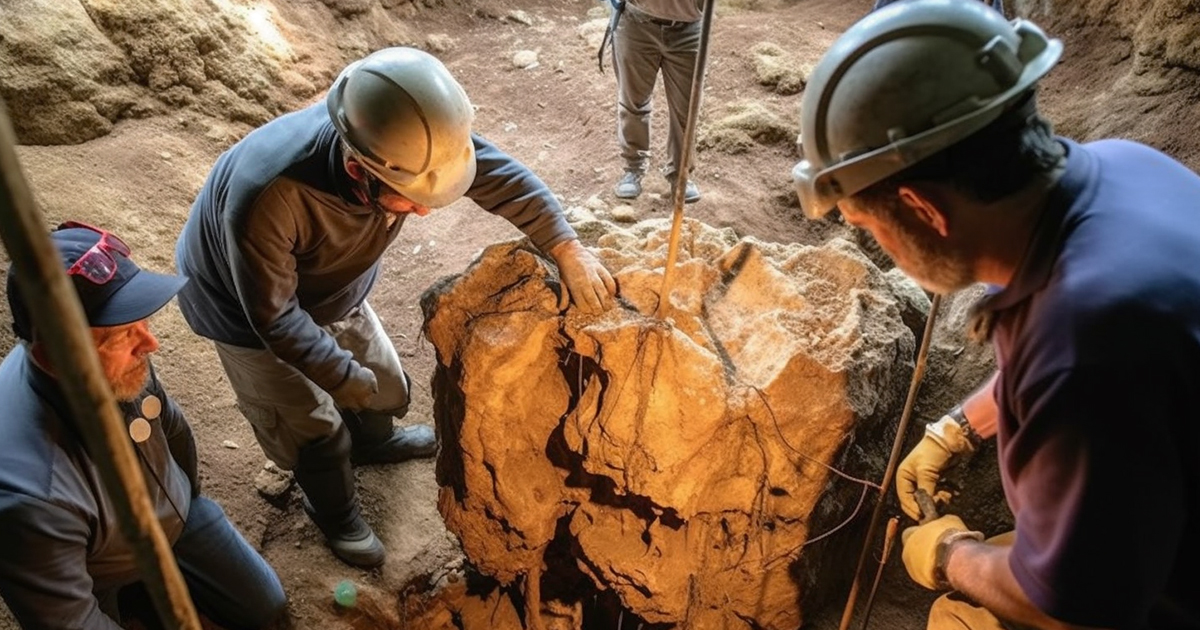Introduction:
A groundbreaking archaeological discovery has shed new light on the origins of modern humans. In an excavation site located in Southeast Asia, researchers have unearthed the earliest evidence of Homo sapiens in the region. This remarkable finding not only challenges existing theories about the migration patterns of early humans but also adds a significant chapter to the narrative of human evolution. The discoveries made by archaeologists have the potential to rewrite our understanding of the ancient past and provide valuable insights into our shared ancestry.
Unveiling a Mosaic of Human Origins:
For decades, scientists believed that modern humans first migrated out of Africa approximately 60,000 years ago, spreading across the globe and eventually populating Southeast Asia much later. However, recent excavations at the site of a cave in the region have presented evidence that pushes back this timeline by at least 20,000 years.
The site, known as Lida Ajer, is located in Sumatra, Indonesia, and has yielded a treasure trove of ancient artifacts and fossils. Archaeologists, led by Dr. Kira Westaway from Macquarie University in Australia, painstakingly sifted through layers of sediment and carefully analyzed the remains found within the cave. Their efforts uncovered stone tools, animal bones, and, most significantly, the teeth and jawbone fragments of at least three Homo sapiens individuals.

Dating the Discoveries:
Determining the age of these findings was a crucial task in understanding their significance. By using a method known as electron spin resonance (ESR) dating, the team was able to estimate the age of the fossils. The results indicated that the Homo sapiens remains were between 73,000 and 63,000 years old, firmly placing them as the earliest evidence of our species in Southeast Asia.
Implications for Human Migration:
The discovery challenges the prevailing notion that Homo sapiens migrated to Southeast Asia relatively late in history. It suggests that our ancestors had a much earlier presence in the region, which may have played a vital role in the peopling of Asia and the subsequent colonization of Oceania. The findings at Lida Ajer indicate that early humans were capable of undertaking long-distance journeys, possibly using ancient land bridges or navigating across waterways.
Furthermore, the presence of stone tools at the site implies the development of sophisticated hunting and gathering strategies, as well as the ability to adapt to diverse environments. This supports the hypothesis that Homo sapiens possessed the cognitive and technological capabilities necessary for successful colonization and survival in new territories.
The Southeast Asian Connection:
The discovery at Lida Ajer holds broader implications for understanding the genetic diversity of modern humans. Southeast Asia is a region known for its rich human genetic variation, and this finding suggests that this diversity has deeper roots than previously thought. It raises questions about the interactions between Homo sapiens and other hominin species, such as Homo Floresiensis and Denisovans, who also inhabited the region during this period.
Looking Ahead:
The unearthing of the earliest evidence of modern humans in Southeast Asia represents a significant breakthrough in our understanding of human evolution and migration. As researchers continue to investigate the archaeological wonders of Lida Ajer and similar sites, they hope to uncover more clues about our ancient ancestors and their remarkable journeys across the globe.
This discovery reinforces the dynamic nature of human history and reminds us of the interconnectedness of all people. It highlights the resilience and adaptability of our species and emphasizes the importance of studying our collective past to better comprehend our present and future. The story of humanity’s origins continues to unfold, and each new archaeological revelation brings us closer to unlocking the mysteries of our shared heritage.
